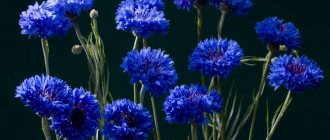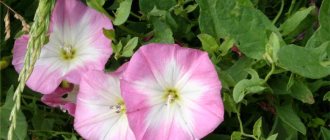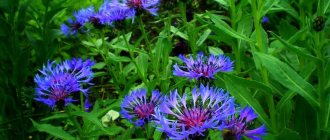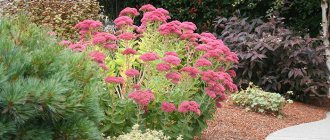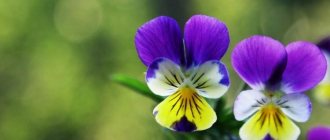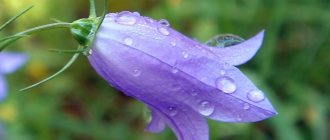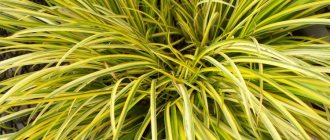History of a flower
The ancient Greeks knew about cornflower. He was mentioned in Meleager's poem "Introduction to the Crown". Cornflower is familiar to many from children's fairy tales and poems. It was first brought to Europe along with rye. The Slavs decorated birthday sheaves with cornflowers and brought them home with songs. A sheaf entwined with cornflowers decorated the front corner of the hut and was a symbol of the harvest. The ornament in the form of ears of rye with cornflowers was popular among needlewomen.
meadow cornflower
There is one story in Russia. When I. Krylov suffered a stroke in 1823, Empress M. F. Romanova sent him a bouquet of flowers and invited him to Pavlovsk to improve his well-being. This touched the fabulist, and later the work “Cornflower” appeared, where he is a fading flower, and the empress is the sun.
Today this plant is used in folk medicine and has an anti-inflammatory and analgesic effect. The infusion is used for heart disease, pain in the head and stomach, and dropsy. An infusion of the plant's baskets can be used for eczema, when bathing a child with diathesis. If the herb is steamed, it can be applied to stretched muscles and tendons. The healing properties are due to the presence of many useful elements in cornflower: manganese, copper, zinc, cobalt, chromium, nickel, potassium, calcium, magnesium, iron.
Important! Not much is known about the medicinal effects of meadow cornflower, so you need to consult a doctor before you start using medications made from it. The use of such drugs is strictly contraindicated for children, pregnant and breastfeeding women.
Meadow cornflower as a honey plant is drought-resistant, therefore it is just suitable for beekeepers during the dry summer period. As for honey productivity, at a favorable time it can produce approximately 110-120 kg of honey from 1 hectare of continuous land. Each flower contains about 5 “portions” of pollen. Bees readily collect it from this flower.
Bee collecting pollen
Reproduction
This blue flower is a frost-resistant plant, so you can often hear recommendations that you can sow cornflowers in the fall. However, we all have different climates, and it would be strange to give the same recommendations for growing cornflowers to flower growers in the Urals and Kuban.
Indeed, in warmer climates, cornflower seeds can and should be sown for the winter, on the eve of frost. The seeds overwinter well and begin to germinate in the spring. At the same time, preparing the soil for sowing cornflower seeds is also simple: you just need to dig it up and loosen it, nothing else is required.
It is necessary to sow the seeds in such a way that young plants do not require replanting in the spring. Consider the distance between the seeds - at least 0.3 m. Expect germination in the spring! Thin them out a little if they grow very thick.
I repeat: this option is suitable for those climatic zones where there are no severe frosts, below minus 30 degrees.
Dividing the bush should be done in the autumn. Wait until the cornflowers have finished blooming, dig up a bush, and clear it of excess parts of the plant. Shake off the soil and wash the roots.
Now you can cut off part of the bush: it is important for you that the future small bush has at least three buds - growth points. Choose a suitable place, dig a hole, plant
After this, you can trim the bush. It will turn green perfectly in the spring!
Choose a suitable place, dig a hole, plant. After this, you can trim the bush. It will turn green perfectly in the spring!
If there is no cornflower in your garden yet, and you want to grow the flower yourself, from seeds, then you can use traditional technology for growing seedlings.
Everything here is familiar: in March-April, prepare the container and soil, soak the seeds, and plant them in the prepared containers. Water the cornflowers and keep them in the sun. When the sprouts reach 8 cm, they can be planted in a flower bed.
Basic botanical characteristics
Cornflower
The stem reaches a height of 1 m, branches in the upper part. At the tops there are inflorescences, which are equipped with a kind of tiled wrapper. The root system is taproot. The leaves are narrow, elongated, green, shiny due to small hairs. The lower leaves are on winged petioles, the middle and upper ones are sessile.
The inflorescences are lilac-colored baskets. There are 2 types of flowers: marginal - funnel-shaped, asexual. They attract pollinating insects to the middle, that is, to tubular flowers (second type), which have both stamens and pistil. The buds open upon contact with a pollinating insect and close until touched again. Belongs to the class Dicotyledons. The fruit is an achene without a tuft.
Description of the variety
It blooms in June-October, achenes ripen from July to October. Can propagate by seeds and vegetatively. If you get into a thicket of cornflowers, the surrounding stems will be waist-deep to a person.
For your information! Several hundred years ago, yellow paint was made from flowers.
Meadow cornflower can be found in many regions of Russia: the European part, Siberia, and the Far East. Grows in meadows, forests, along roads.
Useful properties of cornflower
Garden cornflower is used not only as an ornamental plant. It is also interesting for its medicinal properties. Honey from this plant has a beneficial effect on the stomach, intestines, kidneys and immune system.
Cornflower blue application
The leaves of the flower are used as a seasoning for meat and first courses. The plant has a spicy-sweet taste, combining the acidity of lemon, the freshness of mint and the bitterness of cloves.
The beneficial properties of inflorescences are actively used in cosmetology in the production of masks, face creams and washing liquids. Such products cleanse and rejuvenate the skin well, and are preventative against spider veins and acne.
Alternative medicine uses decoctions of stems and inflorescences as a diuretic, biliary and expectorant. Petals are included in pharmaceutical gastric preparations.
Contraindications
Due to the fact that the chemical composition of the flower contains cyanide components, taking decoctions of this plant is contraindicated for uterine bleeding and painful menstruation, during pregnancy and breastfeeding.
If it is necessary to use it for the treatment of other diseases, the medicine should be used in moderation, taking breaks, as prescribed by the doctor.
Known varieties and their descriptions
Garden cornflower
There are about 500 varieties of annual and perennial cornflowers in the world. What the flower looks like depends on what variety it belongs to and where it grows.
Annuals:
- blue cornflower is a herbaceous plant that has a stem up to 85 cm long. Inflorescences are baskets of blue or blue flowers;
- Musk cornflower differs from other annuals in its relatively small inflorescence. Its flowers look like small pompoms of various colors.
Musk cornflower
Perennial:
- white - up to 30 cm with double flowers. Listed in the European Red Book;
- Mountain knapweed is the most famous species; it has lanceolate-shaped leaves of a grayish-green color. In the middle the flowers are purple, and then become lighter;
- large-headed - shrub up to 115 cm tall with yellow flowers;
- oriental is a wild plant up to 115 cm high with yellow flowers on long petioles. Known since 1759;
- Russian has ovate baskets, all flowers are light yellow. It will look good in the garden;
- whitened. It got its name due to the color of the leaves. These cornflowers have pink flowers with a white center. Height up to 85 cm;
- rough reaches a height of up to 1 m, flowers are red;
- beautiful cornflower - height up to 25 cm, has round lilac flowers;
- spreading cornflower. The length of the rough and grayish stem with cobwebby hairs is from 20 to 55 cm. It blooms in June-September.
White cornflower
These plants are also divided into low-growing and tall-growing flowers. The first includes beautiful, mountain, white cornflower, and the second includes large-headed, Russian cornflower.
Determination formula
Note: the definition was made using the Gubanov determinant. Unfortunately, there is an annoying inaccuracy in the key: meadow cornflower does not have a clearly visible tuft, so it will not be possible to determine the genus of the plant so easily. For everything to work out correctly, when determining the genus at step 47, you need to select the continuation - point (thesis) 51, as if the achene had a pappus. You just need to remember that the cornflower does not have a meadow crest; this is stated in the key in the definition of species.
Genus:
All baskets are identical in structure - the baskets are multi-flowered - there is no milky juice;
there are no reed flowers - flowering shoots with well-developed green leaves - marginal flowers are funnel-shaped, much larger than the internal ones - achene without a tuft (there is an error in the key, see note above)
- the involucre leaves are herbaceous, green and only end in a membranous appendage - plants may be pubescent, but
without abundant
tomentose pubescence - the involucre is multirowed, imbricated - baskets more than 15 mm in size - the inner leaflets of the involucre do not differ from the outer ones - the achene has a lateral or oblique attachment area to the basket bed - the involucre leaves with a dry membranous appendage or edge -
appearance:
erect or ascending - whole stem leaves - pink-lilac flower - involucre leaves with a light brown filmy, unequally toothed appendage
(not black!)
; achene without tuft.
Features of collection and storage
Cornflower blue
The inflorescences of meadow cornflower have found application in many areas. And the main thing here is to know how to pick them correctly:
- For medical purposes, buds without internal tubular flowers and roots are collected. You need to take those flowers that have fully bloomed. It is recommended to collect the seeds when the petals wither and the core becomes dark. Collection should be carried out in environmentally friendly places. Therefore, it is not advisable to do this near roads and in other polluted places.
- The baskets are prepared during the entire flowering period, and the roots are collected in late autumn.
- Everything needs to be dried under a canopy in the shade or in well-ventilated areas. In order for the raw material to dry evenly, it needs to be turned over and watched to avoid direct sunlight, because the flowers instantly fade, become white and lose their healing qualities. There are also special drying devices (in which the temperature is from 40 to 50 ° C), which will speed up the process and make drying better.
Important! Dry raw materials retain all their properties. It is stored for no more than 2 years in cloth bags or cardboard boxes.
Despite the fact that cornflower is a weed, it is popular among summer residents, beekeepers, and doctors. It contains many useful elements. Gardeners are attracted by its unpretentiousness (it only needs loosening the soil and regular watering). It is considered a good honey plant, which is important for beekeepers. For medical purposes, it is important to remember that before using medications based on meadow cornflower, you should consult a doctor.
0 0 votes
Article rating
How to plant cornflower in a flower garden
How do cornflowers grow in natural conditions and in garden plots? In nature, these plants bloom in the second year, in culture - 2-3 months after sowing. Blooms from May to September. Fruits in July-October.
The root is deeply taprooted and branched, which makes it unpretentious to growth conditions.
As a cultivated plant, namely an ornamental one, cornflower loves an open, sunny location and dry, loose soil. Growing and caring for cornflowers does not require much effort - gardeners love these plants for their unpretentiousness. They can withstand drought and, moreover, do not tolerate watering, especially systematic watering.
Cornflower can grow on almost clean sand, at the same time its sprouts are able to “break through” the soil almost as thick as a road. Caring for it consists of periodic weeding, very rare watering, and cutting off faded shoots.
Cornflowers are propagated by seeds, self-sowing and dividing the bush.
When self-seeding, thinning by 15-20 cm is necessary. Sowing seeds in the crop is carried out in spring and autumn. Autumn sowings are done in October, spring sowings in April. Cornflowers of all decorative types stand well when cut, so they are used as floral bouquets together with decorative cereals.
How to plant cornflowers in a flower garden so that they are in harmony with other plants? Blue cornflower is part of the seed mixture for the Moorish lawn. Together with poppy, eschscholzia, calendula, cosmos, and adonis summer, which are just as easily renewed by seeds, cornflower forms a beautiful and long-blooming variegated meadow.
Lawns of cornflowers against a background of white birches are a classic example of decorative groups.
Spreading
Natural habitat
- Africa Northern Africa: Algeria; Morocco; Tunisia
- Western Asia: Türkiye
- Northern Europe Denmark; Finland; Norway; Sweden
Naturalization area
- Asia Siberia: Krasnoyarsk region
- New South Wales, Queensland
- Central Europe: Belgium
- Greenland, Canada, USA
- Argentina; Chile
Adventive area
- Europe Northern Europe: UK
Synonyms
|
|
6.Reproduction
Both vegetative propagation is possible - growing a flower from cuttings, segments of rhizomes or dividing adult plants, as well as seed propagation. The choice of method will depend on the specific type and variety of flower.
6.1.Growing cornflower from seeds
Seed propagation is quite easy for these plants and self-seeding can often be found under mature bushes. When propagating from seeds, it is worth remembering that it is better not to grow varietal plants from the seeds of your own collection - their descendants will often not look as attractive as the mother bushes.
Only specific flowers retain their appearance completely. Seed germination persists for 3 years.
Since vegetative propagation is impossible in many varieties, such plants are grown only from seeds - for example, W. Marshall, Russian, field and musk and annual cornflowers.
Sowing of seeds is carried out in the autumn months before the onset of frost, at such a time that the first shoots do not have time to appear in the fall. It is also possible to sow in March - immediately after the snow cover melts. Cornflowers are planted for seedlings in late winter - early spring. When planting such plants in open ground, the first buds will decorate them already in May.
A plot of land or seedling containers are prepared for sowing. Sowing is carried out in furrows about 2 cm deep, and the seedlings are watered from above. Autumn plantings do not need to be watered.
When sowing in spring, the first shoots appear within 10 - 14 days. With the appearance of several leaf blades, the seedlings are thinned out or planted into separate pots, leaving only the strongest and most robust bushes. After diving or seating, 10 - 15 days later the cornflowers are fed with a very weak solution of nitrogen fertilizers.
Further development will depend on the specific type of flower. In annual bushes, shoots and buds will form during the summer; in biennial and perennial plants, only a basal rosette is formed - flowering will occur in the second year.
When growing for seedlings, seeds can be sown immediately in separate peat pots - in this way painful diving will be avoided, and seedlings can be planted in open ground directly in pots.
6.2. Plant division
Since the structure of the roots differs in many varieties, division should be carried out in different ways. The division of adult bushes is carried out in species such as V. whiteheaded, large-headed and phrygian.
The bushes are dug out of the ground after complete flowering, and the roots are shaken off from soil residues. Old or rotten roots are cut with a garden knife or sterile pruning shears, sprinkling the cuts with wood ash to dry and disinfect.
The bushes are divided into parts so that each division has a well-developed ground part and its own root system. In order to help plants minimize moisture loss, before planting, the stems of the divisions are trimmed, leaving only 10 cm in height.
6.3. Reproduction by segments of rhizomes
Only 2 varieties reproduce in this way - V. mountainous and V. soft. Plants are dug out of the soil, the roots are shaken off from soil residues and they are inspected. If rotten and diseased areas are found, they are cut off to healthy tissue, and the wounds are sprinkled with crushed coal or wood ash.
They mark the places where the division will take place - as a result of the procedure, each division should receive its own renewal soil, or better yet, 2 - 3 buds. The rhizomes are cut with sharp pruning shears, treating the wound surface with coal powder.
The cuttings are planted in holes, watered and shaded from direct sun for 7 - 10 days until rooting.
6.4.Separation of root suckers
Root offspring are shoots that appeared next to the mother bush, on its own roots. For this method of propagation, it is absolutely not necessary to dig up the plant itself - it is enough to separate such an offspring with part of the root system using a shovel and plant it in another place. Only V. fischer reproduces in this way.
6.5. Application in landscape design
Due to its attractive appearance, cornflower is often used in gardens, decorating rock gardens and rockeries, many flower beds and flower beds with its buds.
Of course, these plants look great in a field with cereals, contrasting well with the golden stalks of wheat, but in the garden you can also find cornflowers worthy neighbors. Just look at poppies, marigolds and daisies planted in close proximity to cornflowers.
Long and abundant flowering is not ignored by bees - when grown in the garden, cornflower serves as an excellent honey plant and attracts many more beneficial insects to the site.
Weeds: benefits
Decorative varieties of common weeds are a new trend in modern landscape design.
There are plants that sometimes cause harm. These are the so-called weed flowers. But we must still recognize their advantages:
• Among the weeds there are beautiful plants: bindweeds, entwining fences and hedges with their delicate long stems (with snow-white, pink or red flowers).
• There are edible and healthy weeds: quinoa (strawberry spinach or pigweed), nettle (contains many useful minerals and vitamins), etc.
• Many weeds are good as medicines: dandelion, yarrow, St. John's wort, nettle, etc.
• In the garden, weeds attract beneficial insects necessary for pollinating garden plants (clover, dandelion).
• Most weeds can also be used as good fertilizers (alfalfa, nettle, clover, etc.).
• Weeds can signal the gardener about the composition and acidity of the soil in the garden (the composition of the soil can be determined by the prevalence of a particular weed).
Reproduction of annual cornflowers
Annual cornflowers can be propagated exclusively by seed. Sowing cornflowers, which are not afraid of return frosts and cold even at the seedling stage, can be carried out directly in open soil. The optimal time for sowing is considered to be the first ten days of May, but blue cornflower seeds can be sown even in April, provided that the soil has already warmed up well.
Seeds germinate approximately a week after sowing. You can grow annual cornflowers either through seedling beds with subsequent transfer of plants, or directly at the growing site, followed by thinning and replanting.

